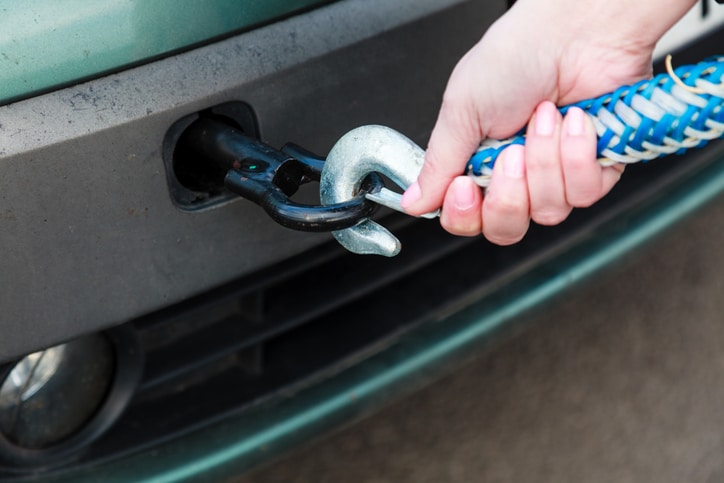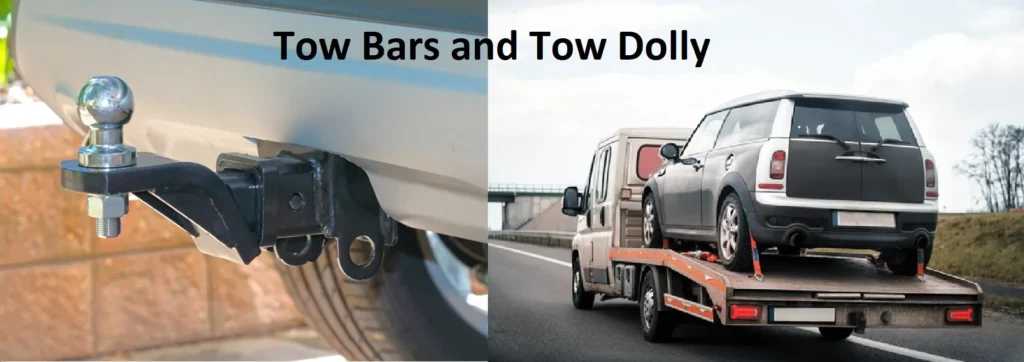Towing a car with a rope can be a practical solution when a vehicle breaks down and needs to be moved to safety. However, it’s essential to understand the proper techniques, safety precautions, and legal regulations to ensure a safe and smooth towing experience. In this guide, we’ll explore everything you need to know about towing with a rope, step by step.
Understanding the Basics of Towing with a Rope
Towing a car with a rope might seem straightforward, but it comes with risks. Before you attempt to tow a vehicle, it’s crucial to know what type of rope to use, the weight limits, and how to securely attach it to both vehicles.

Choosing the Right Towing Rope
- Opt for a heavy-duty towing rope or cable that can handle the weight of the vehicle.
- Avoid using makeshift ropes like bungee cords or thin ropes that could snap under tension.
Attaching the Rope Safely
- Ensure the towing rope is securely fastened to both vehicles using the proper tow hooks or anchor points.
- Never attach the rope to a bumper or unstable part of the vehicle, as this can lead to damage.
Legal Requirements for Towing with a Rope
Before towing a vehicle with a rope, it’s essential to understand the legal requirements in your country or state. Some places may have strict regulations regarding the use of a towing rope versus a tow bar or chain.

Legal Considerations by Country
- In the U.S., towing with a rope is often restricted to emergencies and short distances.
- Many European countries mandate the use of tow bars for safety reasons.
Also Read this: How to Tow a Car with Another Car?
Safety Tips for Towing with a Rope
Safety should be the top priority when towing with a rope. Proper communication between the drivers of both vehicles and careful driving are essential.
Communication Between Drivers
- Use signals or mobile communication to ensure both drivers are in sync.
- Decide on hand gestures or light signals for accelerating, braking, or making turns.
Driving Carefully While Towing
- Drive at a slow, consistent speed (no more than 15-20 mph).
- Avoid sudden braking or sharp turns that could cause the rope to snap or the towed vehicle to swerve.

Pros and Cons of Towing with a Rope
Towing with a rope is an affordable and accessible option in certain situations. However, it has its limitations and risks.
Advantages of Towing with a Rope
- Cost-effective: Towing ropes are inexpensive compared to towing services.
- Easy to store: Towing ropes are portable and can be kept in your car for emergencies.
Disadvantages of Towing with a Rope
- Limited distance: Suitable only for short distances and emergencies.
- Increased risk: Higher chance of accidents or damage compared to using a tow bar.
Alternatives to Towing with a Rope
If towing with a rope seems too risky, there are other methods to consider.
Using a Tow Bar or Tow Dolly
- Tow bars provide more stability and are often legally required for long-distance towing.
- A tow dolly lifts the front or rear wheels of the vehicle, reducing wear and tear on the tires and drivetrain.
Now that you have a thorough understanding of how to tow a car with a rope, remember to prioritize safety and follow local regulations. For more information on car towing equipment or if you’re looking for reliable alternatives, check out our selection of towing accessories to make your next towing experience smoother and safer.

Conclusion
Towing a car with a rope can be a practical solution in emergencies, but it requires careful attention to safety, legal regulations, and proper technique. By choosing the right equipment, maintaining clear communication between drivers, and adhering to safety guidelines, you can minimize risks and ensure a successful towing experience. Always consider alternative towing methods if the situation allows for it, as they may provide greater stability and security. If you’re ever in doubt, consult a professional towing service to avoid potential hazards.
FAQs
The legality of towing with a rope varies by location. In some regions, it is permitted for short distances in emergencies, while other areas may require tow bars or professional towing services. Always check local laws before towing.
It’s best to use a heavy-duty tow rope or strap designed specifically for towing vehicles. These ropes are made from durable materials and have a high weight capacity. Avoid using regular ropes, as they may snap under tension.
When towing a car with a rope, you should drive at a very slow and steady speed, usually no more than 15-20 mph. Sudden stops or fast driving can cause accidents or damage to both vehicles.
Towing with a rope can be safe when done properly, but it comes with inherent risks. Ensure the rope is securely attached, drive cautiously, and maintain good communication between the drivers. For longer distances, consider using a tow bar or dolly for increased safety.
If the rope snaps while towing, both vehicles should stop immediately. Assess the situation, and if possible, replace the rope with a stronger one. Avoid driving until the towing setup is secure.